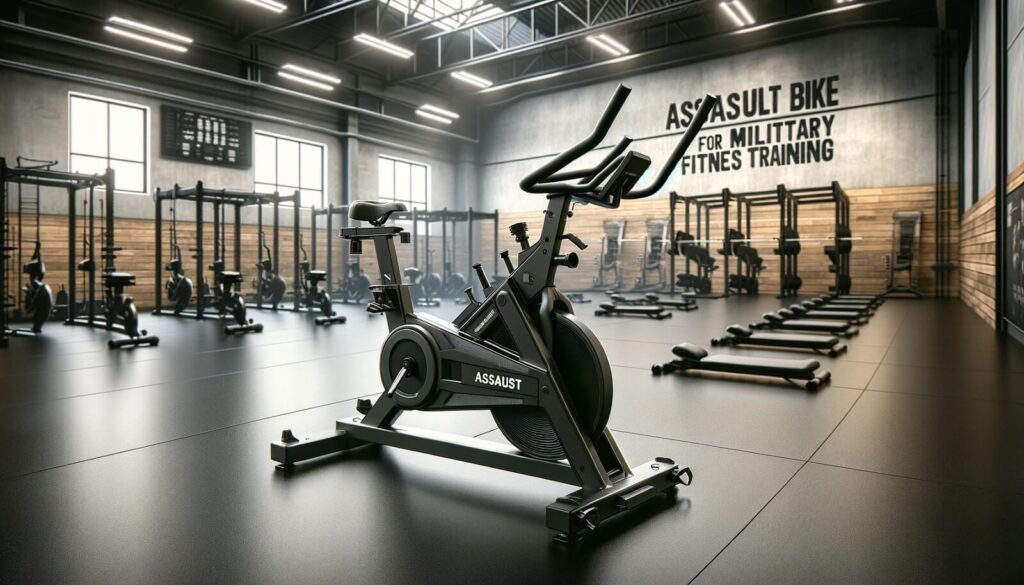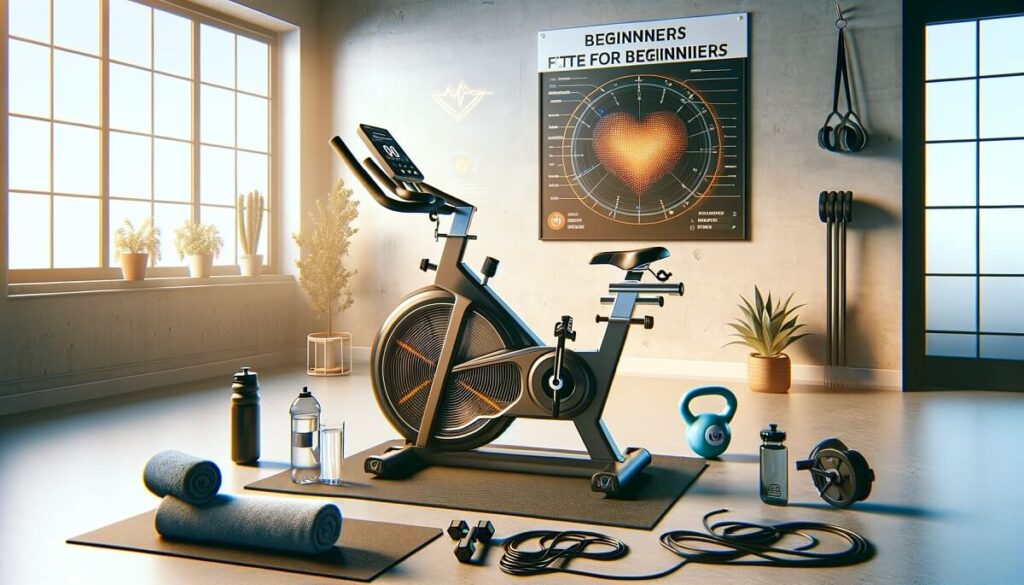Assault Bike Calorie Burn: How to calculate (Complete Guide)
In fitness, the assault bike is a versatile tool, demanding strength and endurance. One pivotal aspect of optimizing your workout on this stationary powerhouse is comprehending the dynamics of how to calculate “Assault Bike Calorie Burn.” This knowledge is a compass, guiding you through the fitness landscape with precision and purpose.
Why knowing matters:
The Significance of Assault Bike Calorie Burn Knowledge:
The Assault AirBike is a calorie-burning machine that can help you burn up to 80 calories per minute. Its unique push-pull-push mechanism engages your upper and lower body muscles simultaneously, making for an intense workout that burns calories efficiently.
Understanding “Assault Bike Calorie Burn” helps you be the boss of your workout. It’s like having a roadmap showing you the way to your fitness goals. Whether you aim to lose weight, stay in shape, or be healthy, this knowledge is your fitness superhero.
Exploring Factors Shaping Assault Bike Calorie Burn:
Now, let’s break down what affects “Assault Bike Calorie Burn”:
- Weight Magic: You might burn more calories if you carry more weight. Your body is working harder because more of you can move around.
- Intensity Vibes: How hard you work is crucial. Imagine it like turning up the volume on your workout. The higher the intensity, the more calories you’ll likely burn.
- Time on the Bike: The longer you pedal, the more calories you use. But here’s the trick: finding the right balance between time and how hard you’re working.
- Your Fitness Level: How fit you are plays a role. If you’re a fitness pro or just starting, your body handles calories differently. It’s like your body has its way of doing things.
So, next time you hop on that assault bike, remember, it’s not just a bike ride. It’s your journey, and understanding “Assault Bike Calorie Burn” is like having a cool guide leading you to fitness victory!
How to Calculate Calorie Burn on an Assault Bike
- Your Weight: First, know how much you weight. It’s essential to use this in kilograms for the calculation.
- Time Spent on the Bike: Figure out how long you pedal on the assault bike. Keep this up for hours.
The Formula:
Calories Burned=(MET×Weight in kg×Duration in hours200) ×60Calories Burned = (200 MET×Weight in kg×Duration in hours) ×60
Understanding the Terms:
- MET (Metabolic Equivalent of Task): This is a number representing the intensity of your exercise. For an assault bike, it usually falls between 8 and 12, depending on how hard you’re working.
- Weight in kg: Your weight in kilograms
- Duration in hours: How long have you been on the assault bike in hours?
Putting it into practice:
- Example: Let’s say you weigh 65 kg. You ride for 45 minutes at a pretty intense level with a MET value of 10.
- Convert minutes to hours: 45 minutes is 45606045 hours or 0.75 hours.
- Plug in the numbers:
- Calories Burned=(10×65×0.75200)×60 Calories Burned=(20010×65×0.75)×60
The Result:
Calories Burned=(487.5200)×60 Calories Burned=(200487.5)×60
Calories Burned=2.4375×60 Calories Burned=2.4375×60
Calories Burned=146.25 Calories Burned=146.25
So, in this example, you would burn around 146 calories during that 45-minute assault bike session. Remember, these are estimates, and your actual burn can vary based on factors like individual metabolism and fitness level. Use this as a guide, and enjoy your workout!
Monitoring Heart Rate for Accurate Results
Checking your heart rate is like having a fitness superhero help you during your exercise. It tells you how hard your heart works and helps you work out just right. Here’s why and how to do it in simple terms:
Why Check Your Heart Rate:
- Know How Hard You’re Working: Your heart rate shows how tough your workout is. If it’s beating faster, your workout is harder.
- Stay in the Right Zone: Different heart rates mean different things to your body. It helps you stay in the right zone for what you want, like burning fat or getting fitter.
- Avoid Working Too Hard: If your heart rate is always super high, it might mean you’re working too hard. Checking it helps you do less and get tired.
How to Check Your Heart Rate:
- Use a Heart Rate Monitor: You can wear a gadget or a wellness tracker that tracks your pulse. It resembles having a little partner on your wrist.
- Feel Your Pulse: You can also feel your pulse on your wrist or neck. Count the beats for 15 seconds, then multiply that by four to know how many times your heart beats in a minute.
- Know your target: Figure out your goal heart rate. It’s like a bullseye for your workout. Your age determines this figure.
- Check When You’re Not Moving: Your resting pulse is the pace of your heart while you are not doing anything (for example, sitting or resting). It permits you to quantify your wellness level.
Tips to Get It Right:
- Keep checking: Do it often, especially when exercising, like running or biking. It helps you know what’s happening in your body.
- Think About Other Stuff: Sometimes, things like feeling stressed or not drinking enough water can change your heart rate. Remember this when you’re checking.
- Listen to Your Body: Even if the data indicate one thing, pay attention to how your body feels. Slowing down or taking a break is fine if you’re fatigued or something seems weird.
Checking your heart rate isn’t just for experts. It’s like conversing with your body, ensuring you do what you need for a healthy and happy workout!
Making Your Workouts Better: Tips for Burning More Calories on the Assault Bike
If you want to get the most out of your time on the assault bike and burn more calories, here are some simple tips:
1. Know Your Goals:
- Figure out what you want from your workout. Whether it’s burning calories, building stamina, or losing weight, having clear goals helps you focus.
2. Warm Up Right:
- Start with a good warm-up. It prepares your body for action, making your assault bike time more effective.
3. Mix It Up with Intervals:
- Try going fast for a bit, then slow down. This mix, called interval training, can boost how many calories you burn and make you fitter.
4. Watch your posture:
- Pay attention to how you sit and pedal. Keeping good posture prevents you from hurting yourself and helps you burn more calories in the right places.
5. Take it slow at First:
- If you’re new to the assault bike, don’t go all out from the start. Begin easy and increase the difficulty over time. It helps your body adjust without straining.
6. Use Different Resistance:
- Some bikes have settings to make it harder. Try different resistance levels to challenge your muscles and burn more calories.
7. Keep Track of Your Progress:
- Write down or use apps to keep tabs on how you’re doing. Seeing your progress motivates you and helps you set new goals.
8. Drink water and eat right.
- Stay hydrated before, during, and after your workout. Eating well gives you the energy you need for your assault bike sessions.
9. Cool Down After:
- Finish your workout by cooling down. Stretch a bit and slow your heart rate down. It helps you feel better and prevents sore muscles.
Common Mistakes to Avoid
Making smart choices during workouts is crucial for a successful and enjoyable fitness journey. Always start with a warm-up to prepare your muscles and reduce the risk of injuries. Pay attention to your form, ensuring you exercise correctly to maximize benefits and avoid strains. If you’re starting, take it slow and gradually increase the intensity to prevent overexertion. Listen to your body; stop and adjust your workout if something hurts.
Diversify your routine to keep things interesting and engage different muscle groups. Remember the significance of rest; your body requires time to recuperate, so schedule breaks into your schedule. Hydration is essential for staying energetic, so drink water before, during, and after your workout. Set realistic goals, celebrate small victories, and maintain motivation. Plan your workouts for efficiency, balancing cardio and strength training for overall fitness.
Avoid comparing yourself to others; every fitness journey is unique. Finally, include a cooldown with stretching to promote flexibility and reduce post-exercise stiffness. Following these simple guidelines creates a foundation for a healthier, more effective, and sustainable workout routine.
Conclusion
Knowing how many calories you burn on the assault bike is super important for your fitness journey. The assault bike is a terrific method of exercise, and understanding how it burns calories may help you achieve your objectives, whether you want to lose weight or get fitter.
Ascertaining includes weighing your weight, how hard you work, and how long you’re on the bicycle. It resembles having an aide for your activity process, showing you the most effective way to get where you need to be.
Everybody is unique, so paying attention to your body is great. Start slow, stay consistent, and use the knowledge of assault bike calorie burn to make your workouts effective and enjoyable. It’s not just about riding a bike; it’s about making each pedal count on your way to a healthier you!
Frequently Asked Questions (FAQs) About Assault Bike Calorie Burn
Q1: Is the calorie burn on an assault bike accurate?
A: It’s an estimate. Actual calorie burn can vary due to individual metabolism and fitness level. The formula provides a good guideline for estimation.
Q2: What does MET mean in the context of assault bike workouts?
A: MET stands for Metabolic Equivalent of Task, a measure of exercise intensity. Assault bike MET values help gauge how hard you’re working during the workout.
Q3: Can I lose weight by only using an assault bike?
A: While an assault bike is excellent for burning calories, combining it with a balanced diet and other exercises enhances overall weight loss and fitness benefits.
Q4: How long should I use the assault bike for effective calorie burn?
A: The duration depends on your fitness level and goals. Start with a comfortable time and gradually increase it. Aim for at least 20-30 minutes of notable calorie burn.
Q5: What factors influence calorie burn on an assault bike?
A: Weight, intensity, duration, and fitness level play key roles. Heavier individuals may burn more; higher intensity increases burn; longer sessions generally result in more calories.






